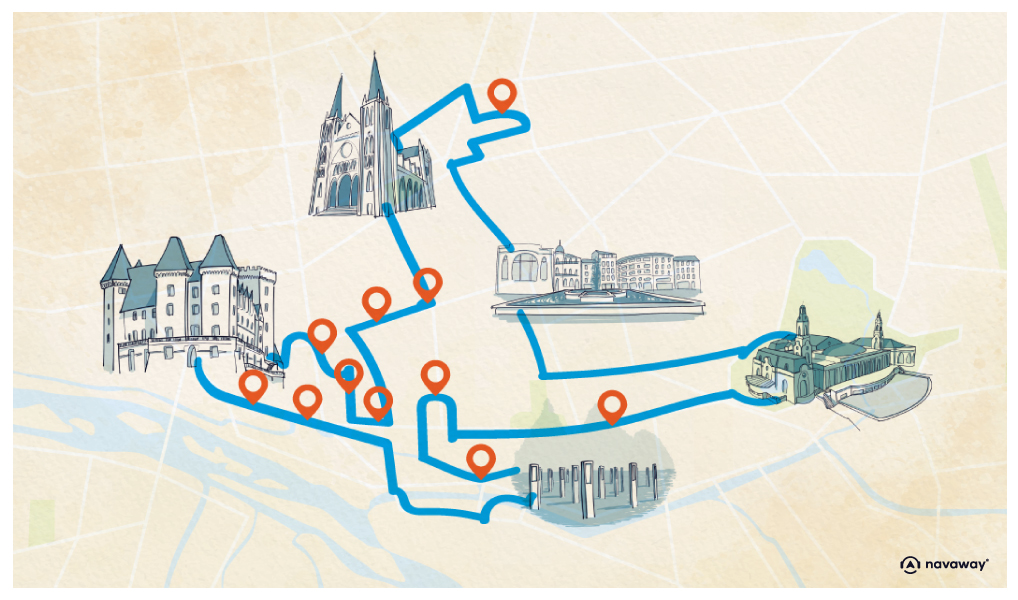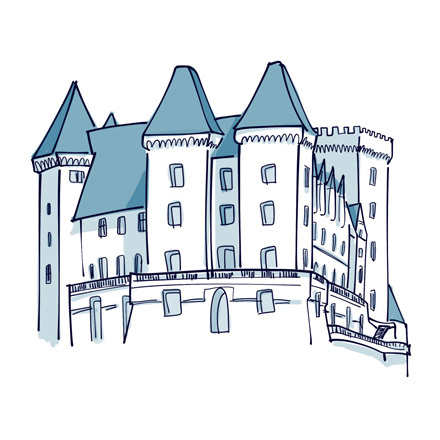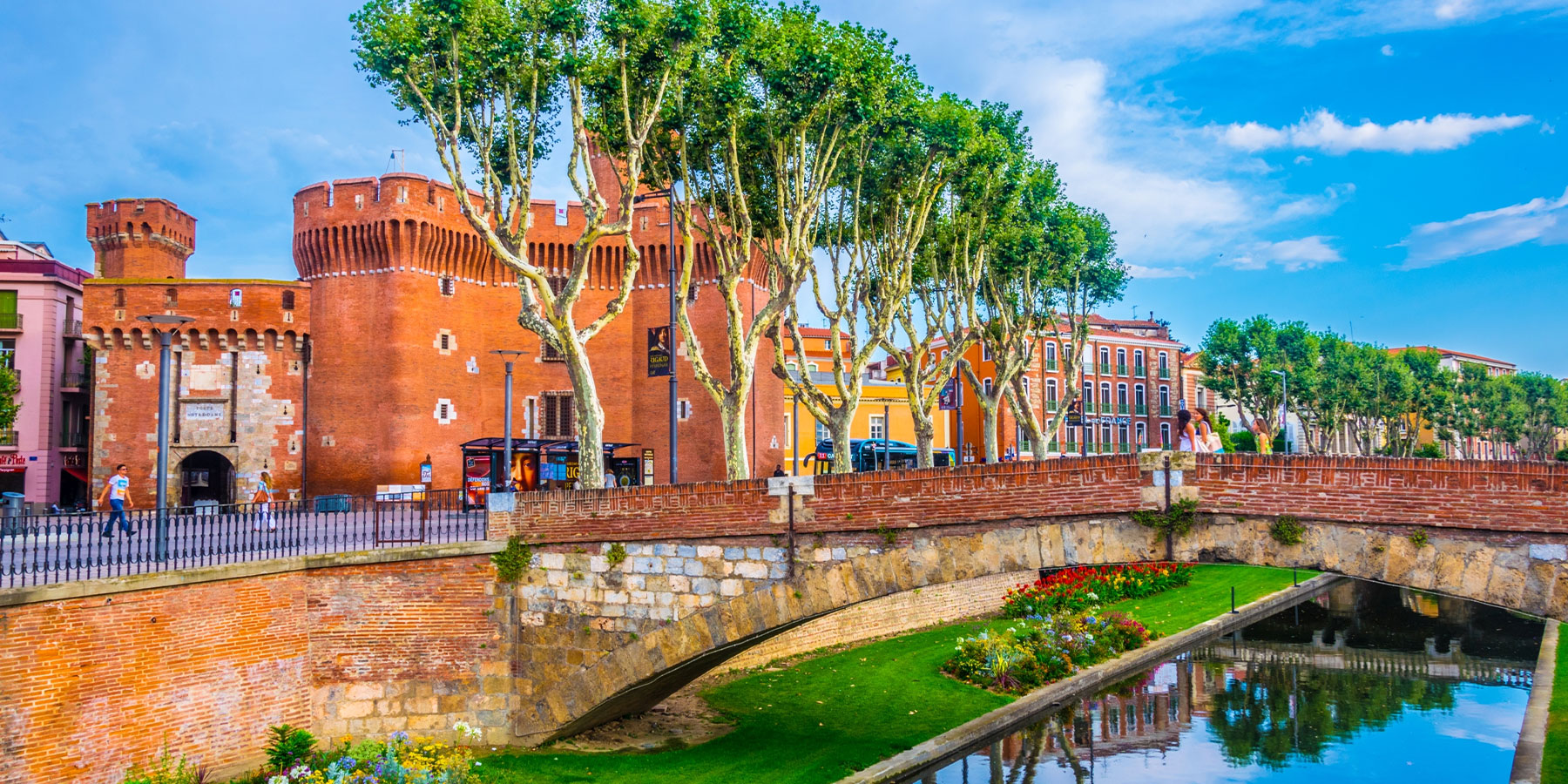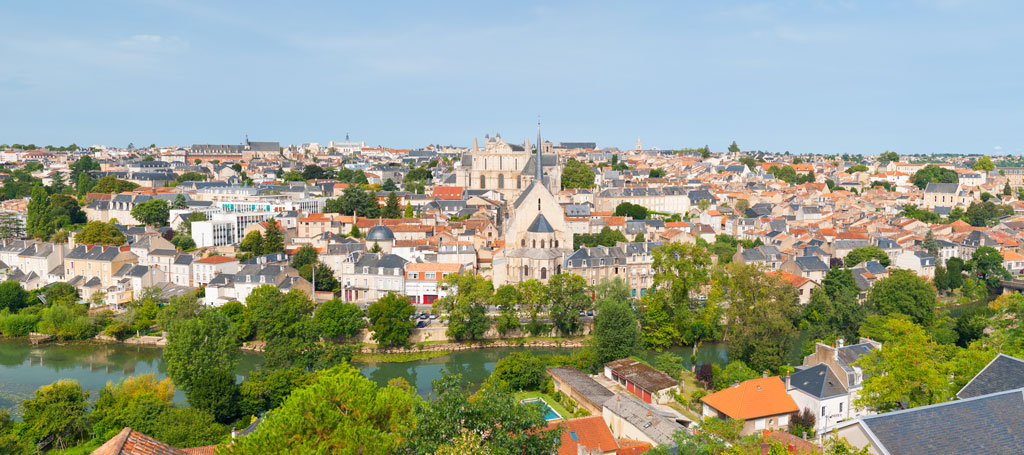
Pau Castle

This point of interest is available as audio on the tour: Visit Pau, From the Bay of Biscay to the Gulf of Lion
You’ve finally arrived at the beautiful Pau Castle! Before it became this magnificent Renaissance palace, Pau Castle was a simple fortification designed to monitor the watchtower on River Gave. It was surrounded by a wooden palisade, known in Béarnais as the ” pau “, which gave the town its name. Gaston Fébus was the man who brought about the true transformation of the town. A hero of Béarn, he achieved the feat of not siding with the French, English, or Spanish during the 100 Years’ War, but instead proclaimed the neutrality of Béarn by signing its declaration of independence in 1347. To make sure he remained neutral, Fébus turned his castle into an unbeatable fortress. The main witness to this is the massive brick donjon before you. Then came Gaston IV, Count of Foix, who wanted to make Pau the capital of Béarn. Gaston traveled extensively in France and found castles there rather attractive. Given the different context, he tried to tone down the defensive aspect of the fortress and topped the towers with high-slate roofs. The castle became more open to the world, with balconies overlooking the gardens and facing the mountains. The Count even married Eleanor of Navarre, making his descendants the future kings of Navarre. Our castle thus became royal. This beautiful palace witnessed the birth of Henri IV. However, the fame was followed by a period of oblivion. In the 17th century, Louis XIII attached Béarn to France and Pau became a provincial town like so many others. No longer a residence for kings, the castle was then used as a prison or barracks. It was not until the 19th century that interest in the castle was revived. It was Louis Philippe and then Napoleon III who turned it back into a castle. The main courtyard in which you are standing was opened up to the city with the neo-Renaissance portico that you can admire at the entrance, and Napoleon III’s sculptors carved numerous ornaments on the façades. The interior was also entirely redecorated to the glory of Henri IV. You may be wondering why a king and an emperor would seek to restore the image of an abandoned castle. The answer is simple: the French adored Henri IV, who, with the Edict of Nantes, pacified the country during the terrible Religious Wars, and the image of the good king remained with them ever since. Glorifing him was a way to benefit from his good reputation Especially as Louis Philippe is a descendant of Henri IV, he naturally wanted to be associated in the collective imagination with this much-loved ancestor. The palace was once again used as a residence for the Presidents of France, but soon became a national museum. There is an entrance fee to visit the castle. Among other things, you can see the famous tortoise shell that, according to legend, served as Henri’s cradle.


Discover Pau with app
An interactive guide through the most beautiful streets, squares, and districts
18 fun audioguides full of historical facts, anecdotes, and legends





Comments